Abstract
Much research has focused on the effects of environmental variability on foraging decisions. However, the general pattern of preference for variability in delay to reward and aversion to variability in amount of reward remains unexplained a either a mechanistic or a functional level. Starlings' preferences between a fixed and a variable option were studied in two treatments, A and D. The fixed option was the same in both treatments (20-s fixed-interval delay, five units food). In Treatment A the variable option gave two equiprobable amounts of food (20-s delay, three or seven units) and in D it gave two equiprobable delays to food (2.5-s or 60.5-s delays, five units). In both treatments the programmed ratio [amount/(intertrial interval+latency+delay)] in the fixed option equaled the arithmetic mean of the two possible ratios in the variable option (ITI = 40 s, latency = 1 s). The variable option was strongly preferred in Treatment D and was weakly avoided in Treatment A. These results are discussed in the light of two theoretical models, a form of constrained rate maximization and a version of scalar expectancy theory. The latter accommodates more of the data and is based on independently verifiable assumptions, including Weber's law.
Full text
PDF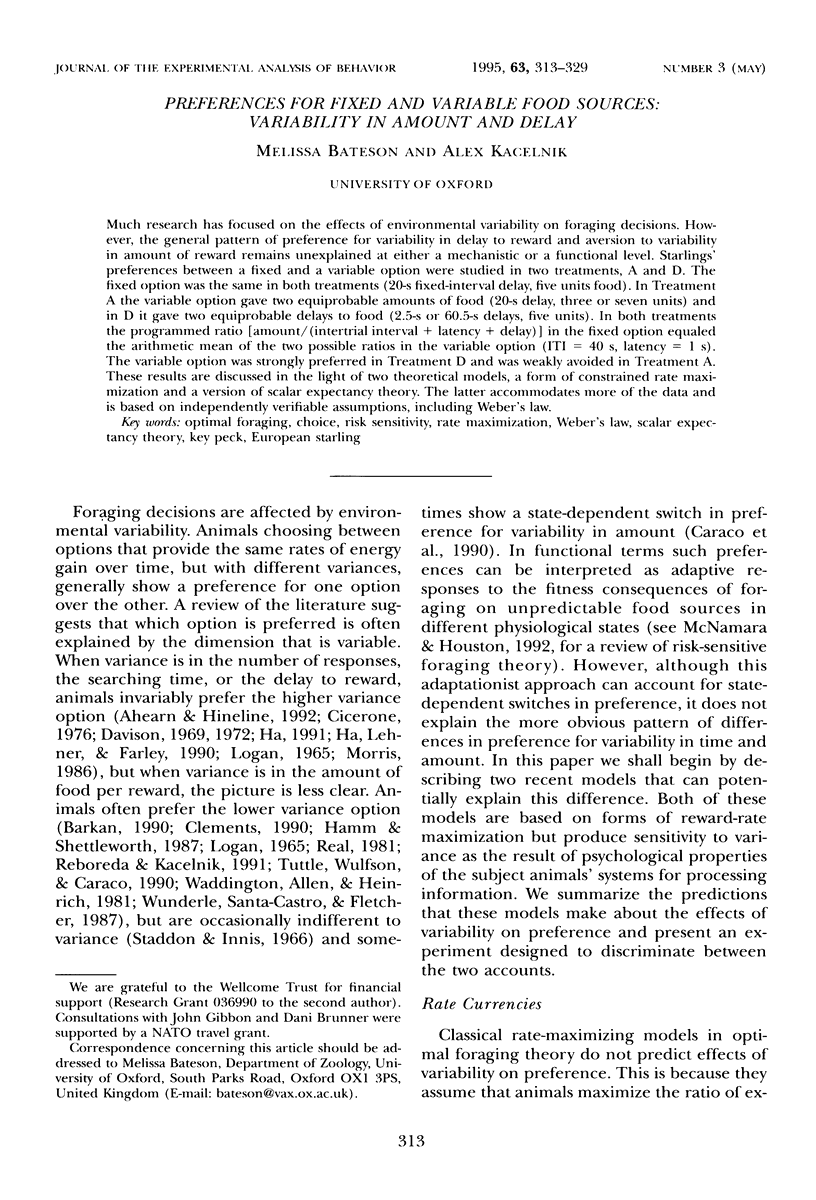
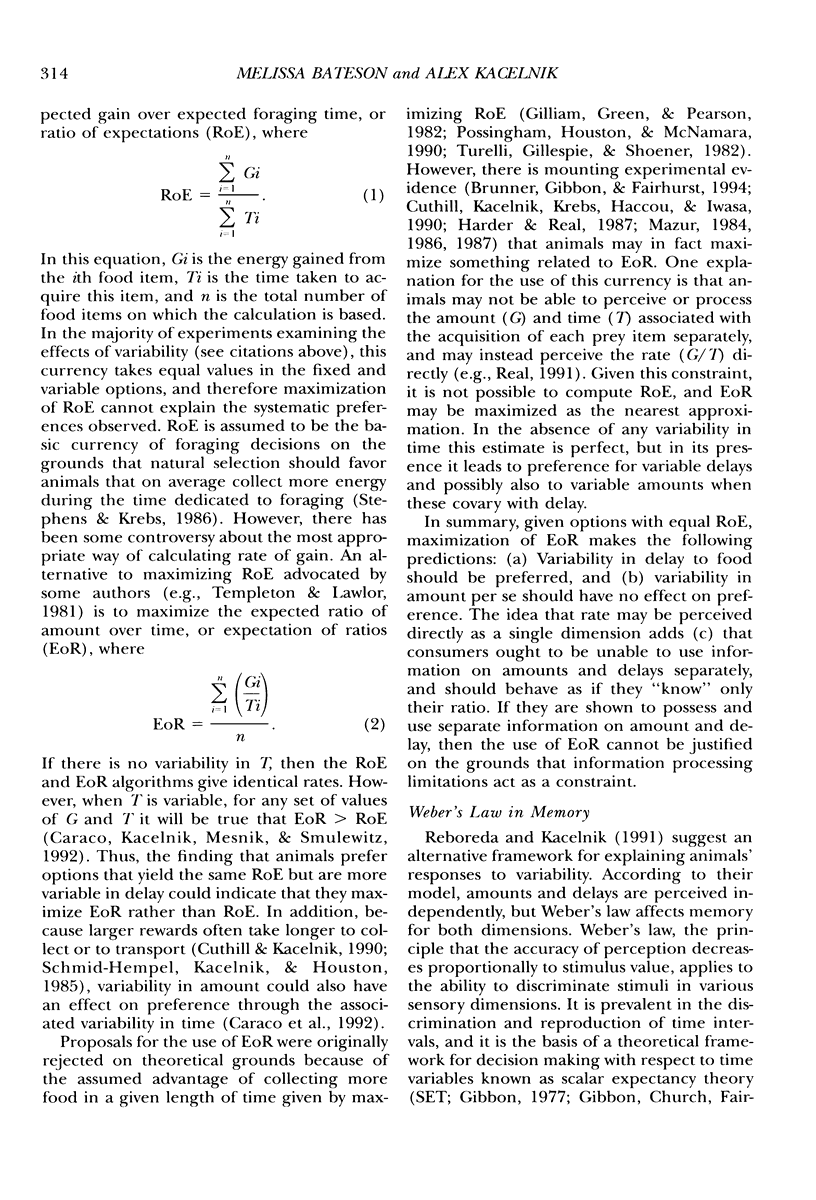
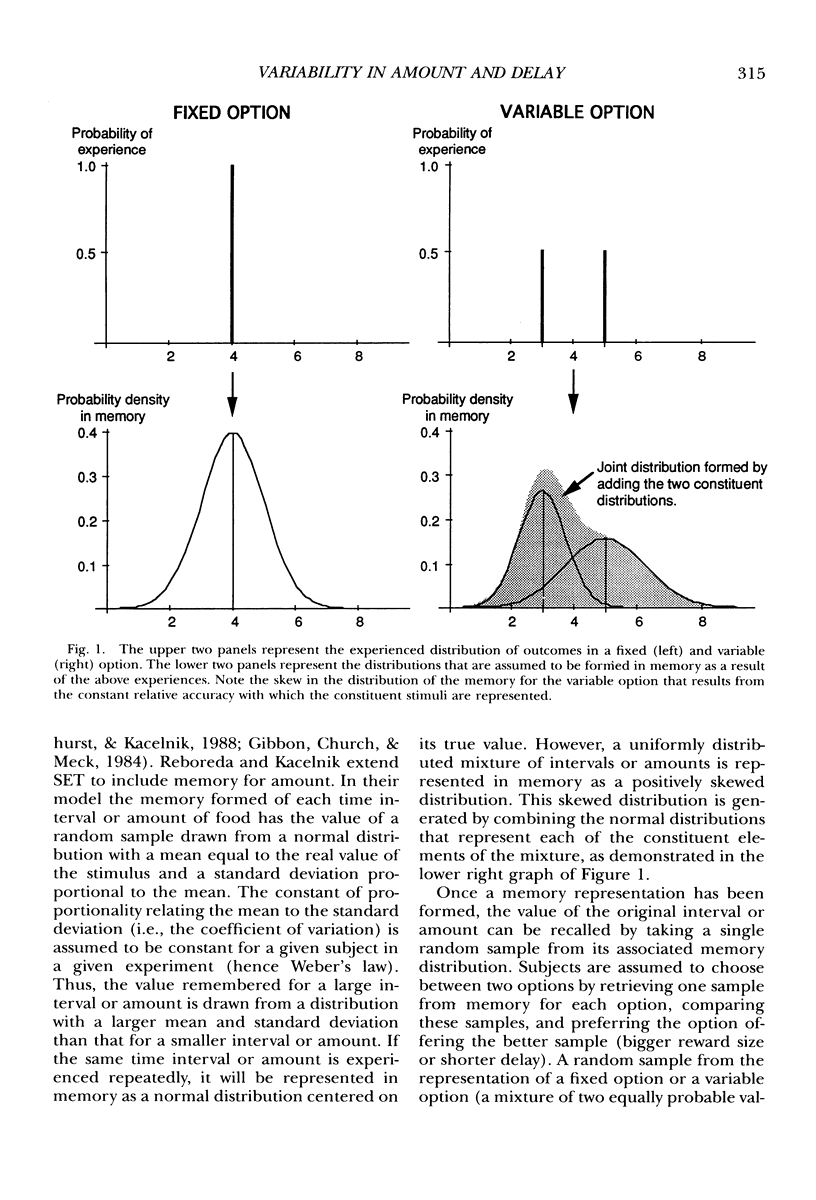
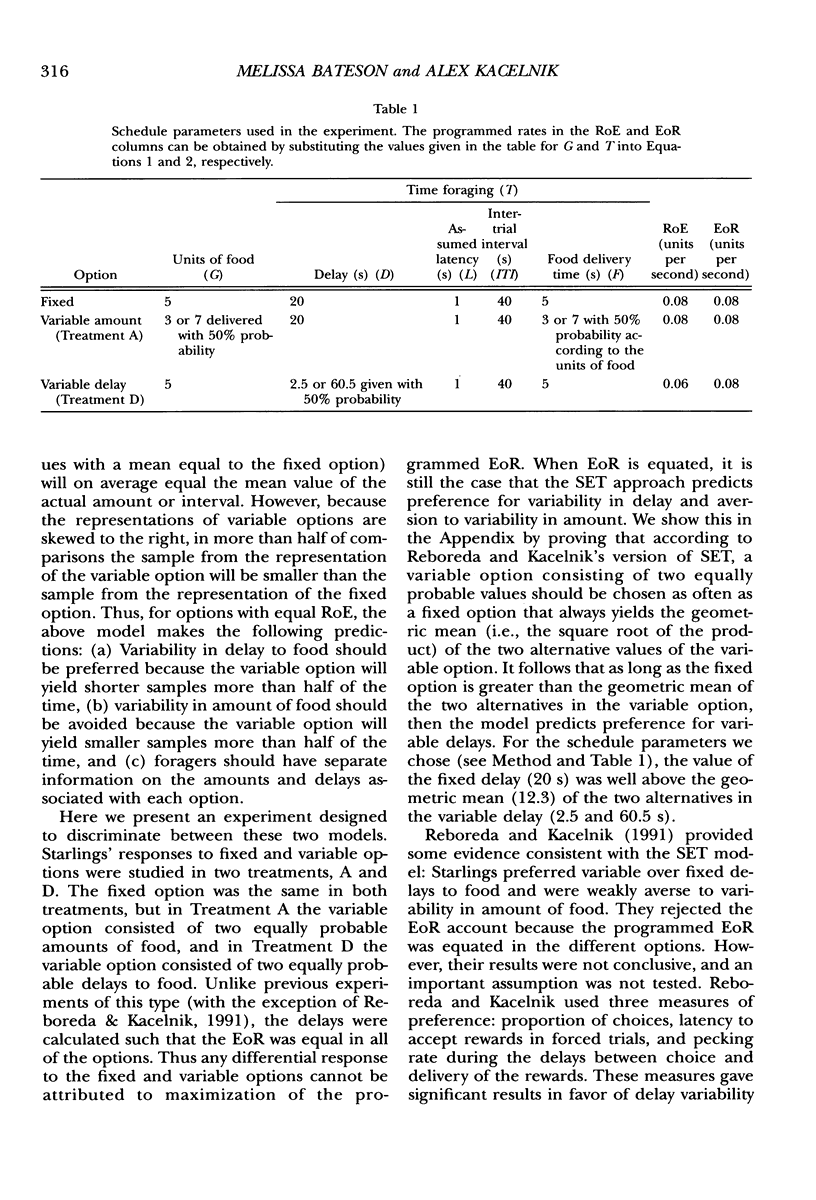
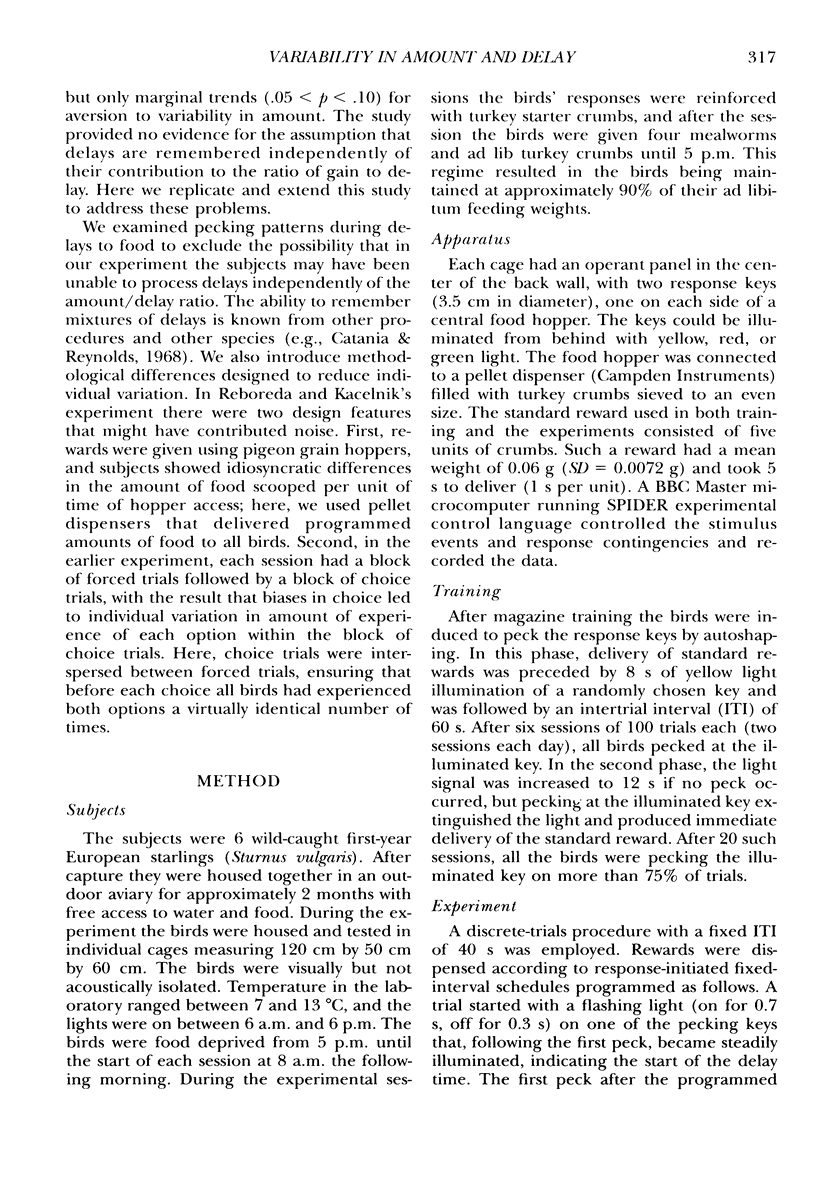
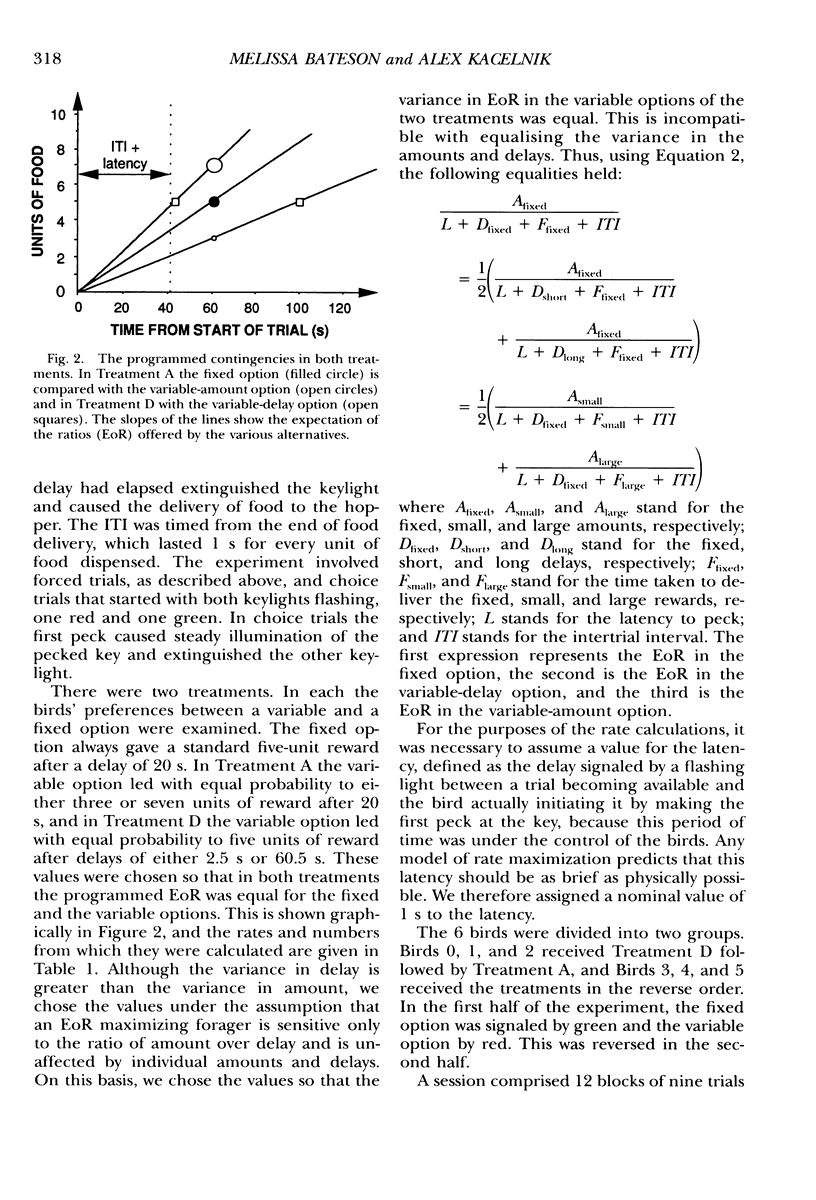
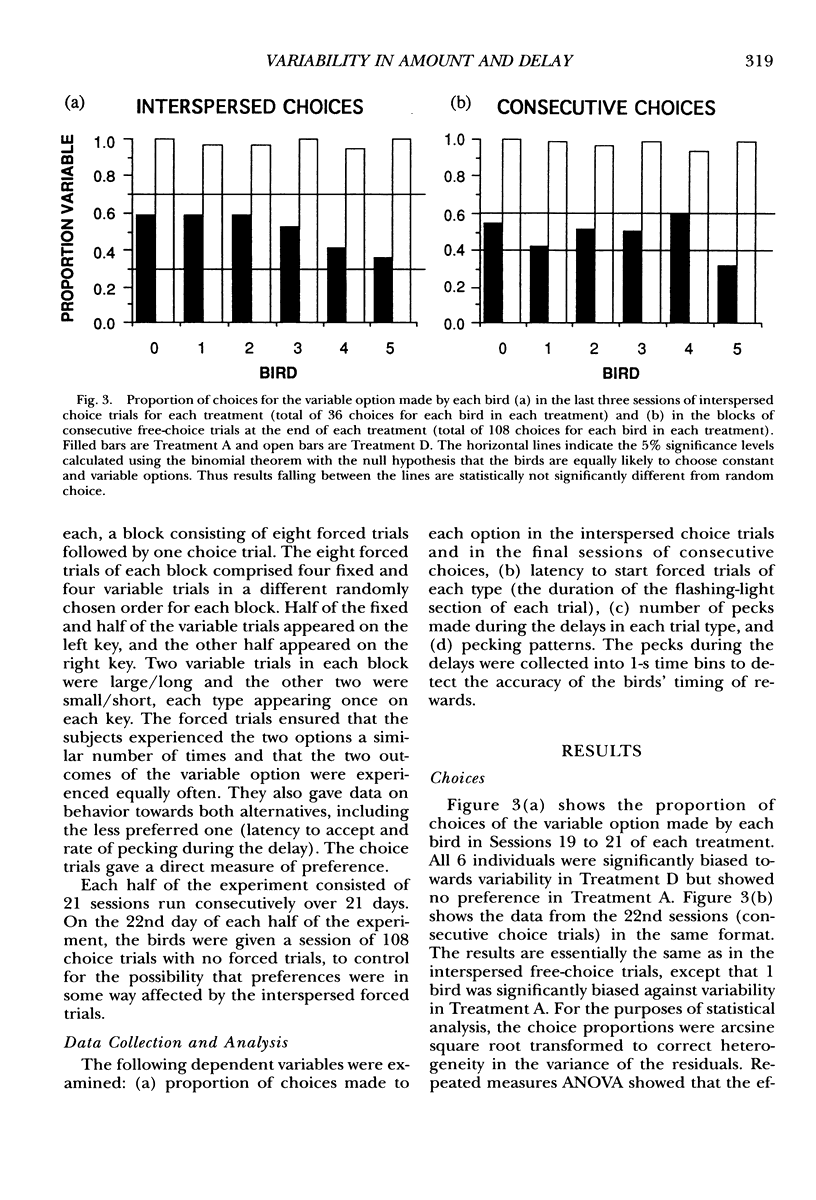
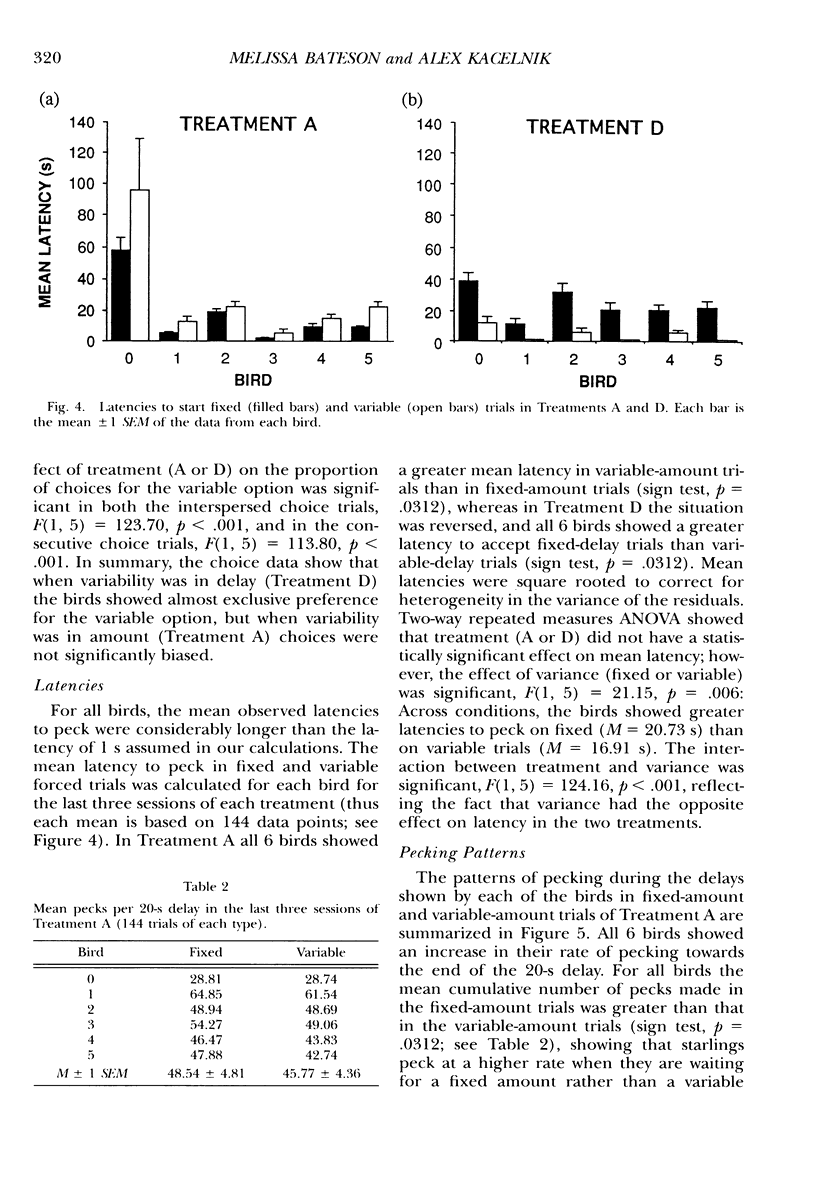
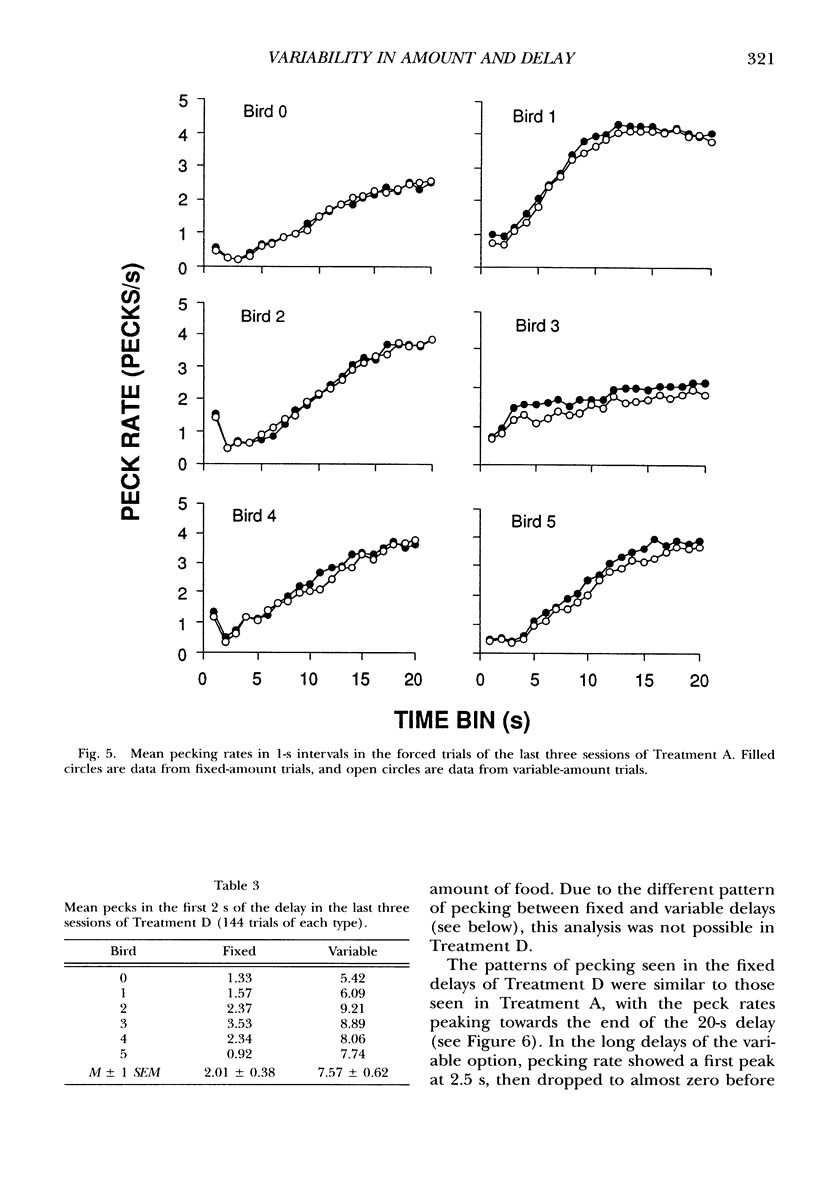
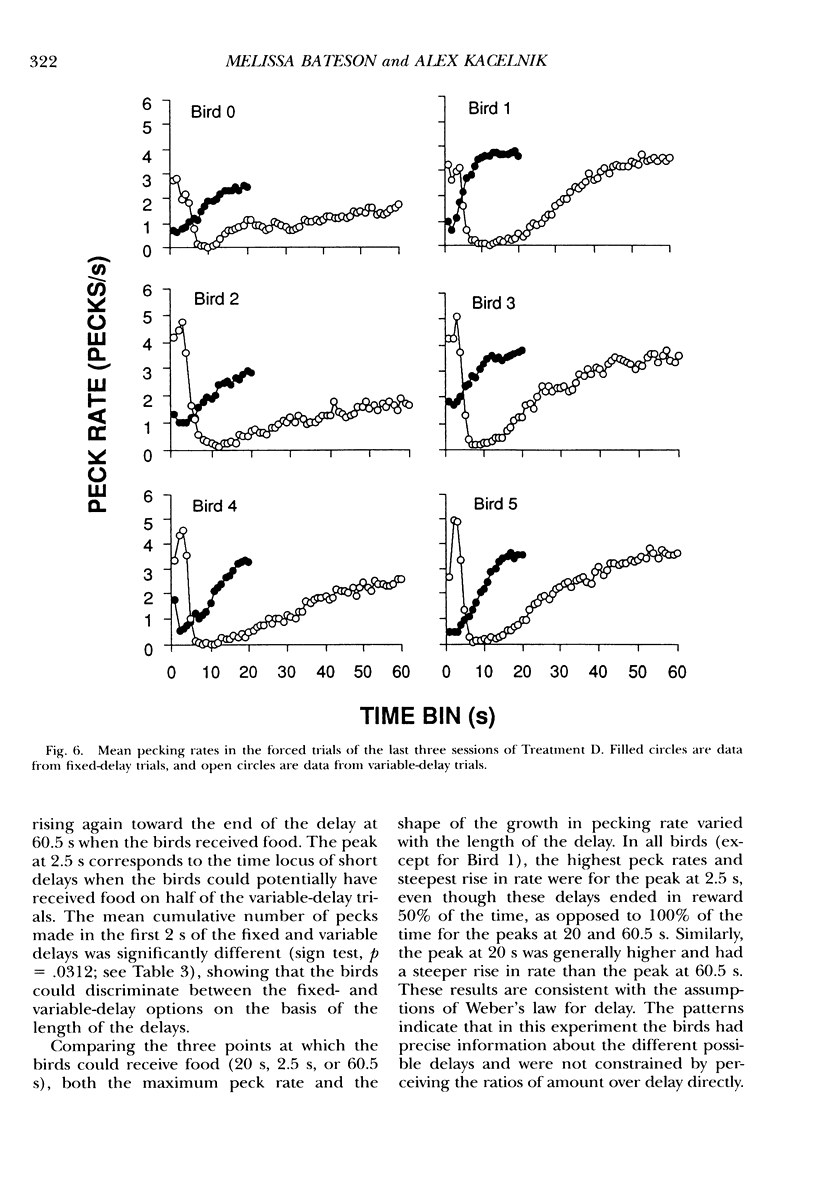
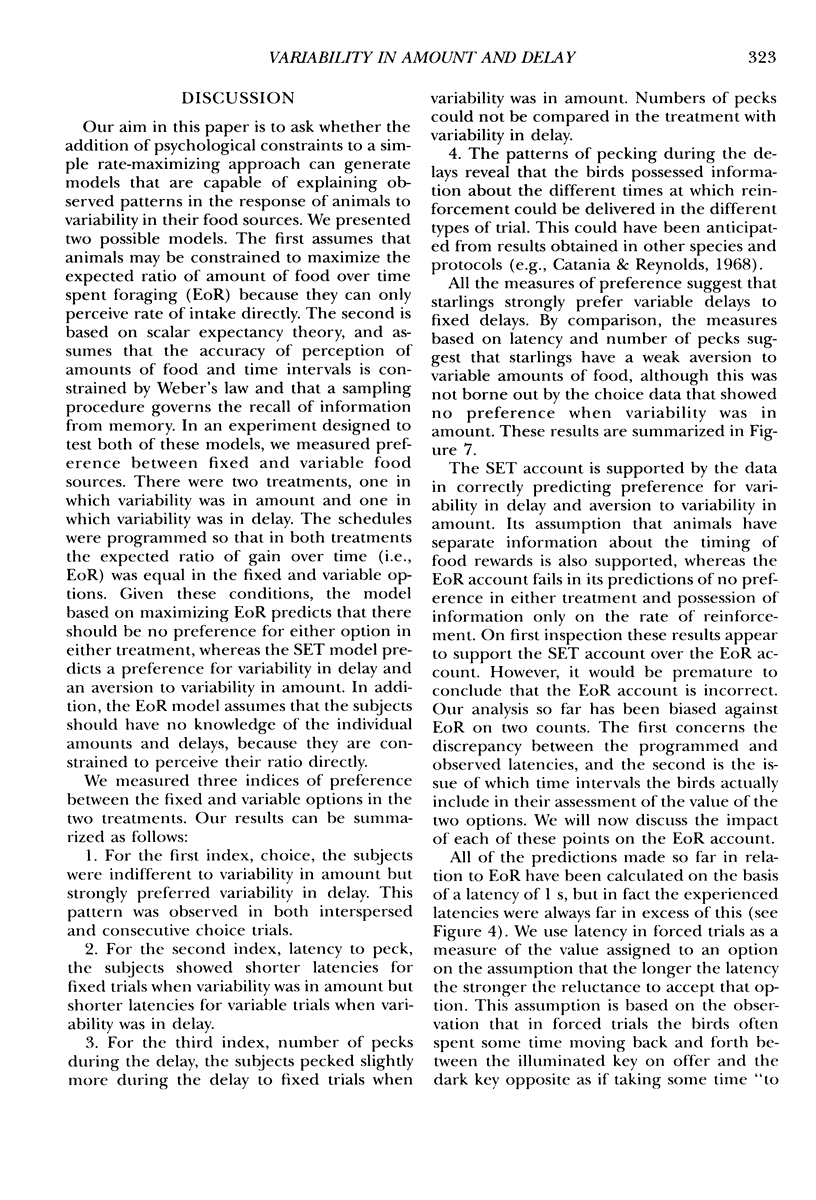
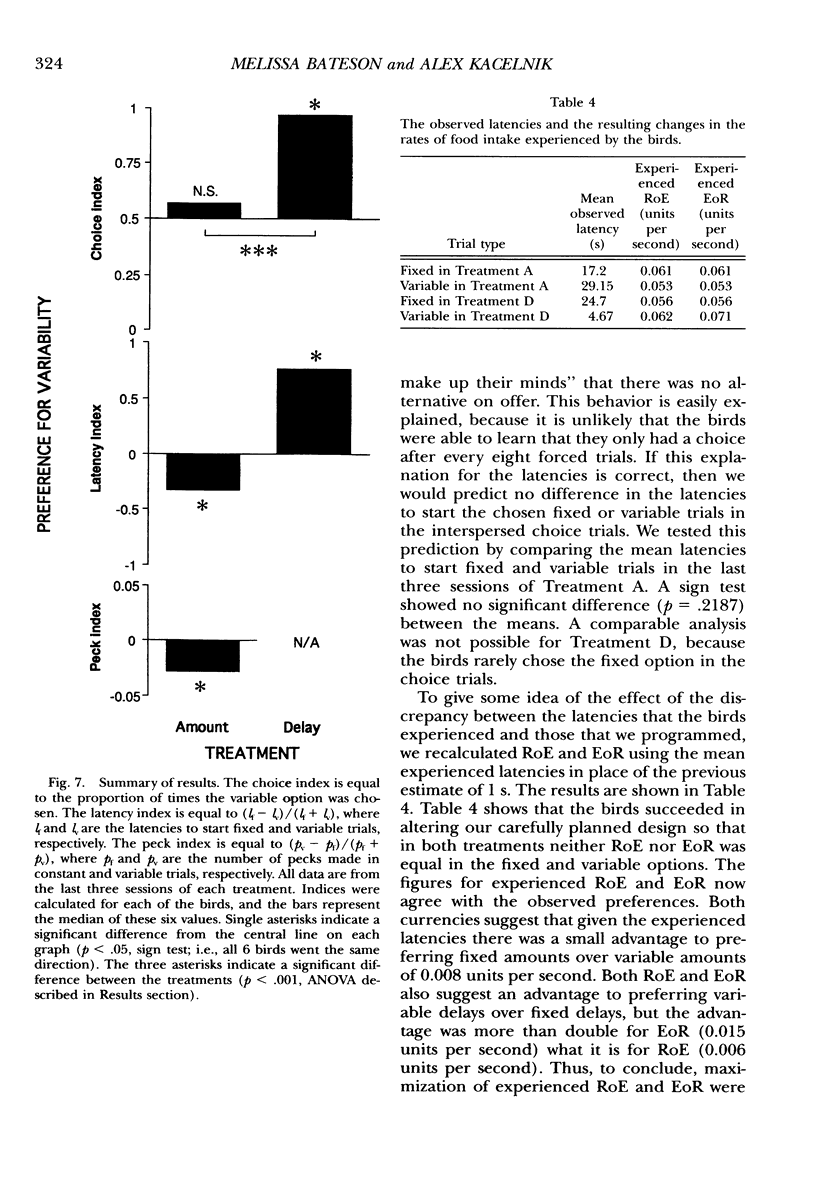
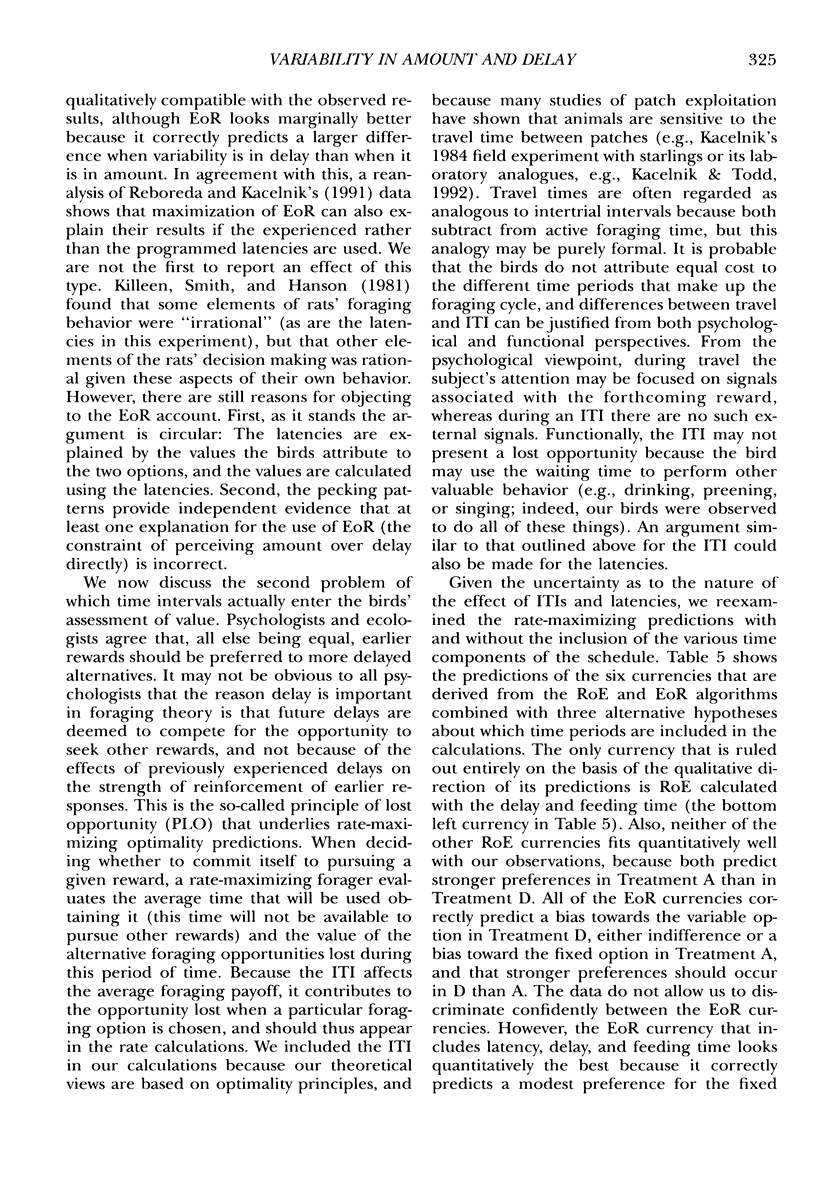
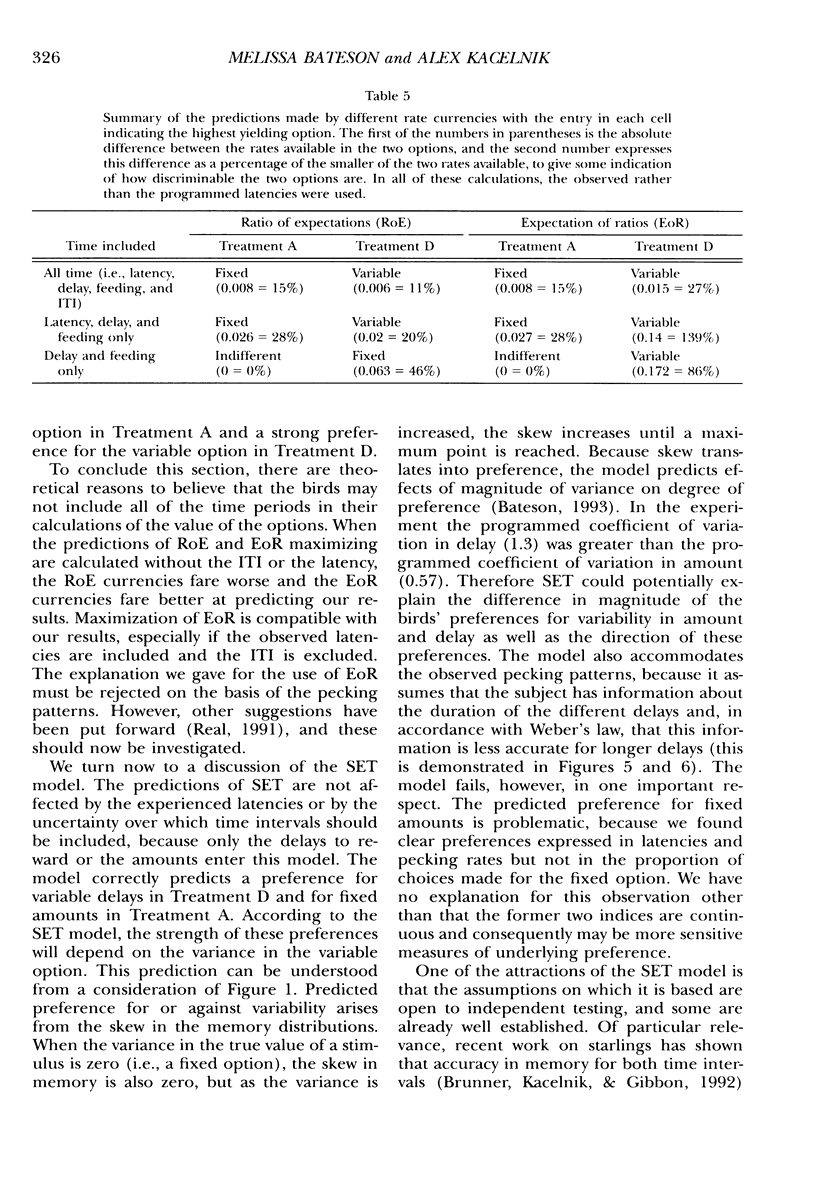
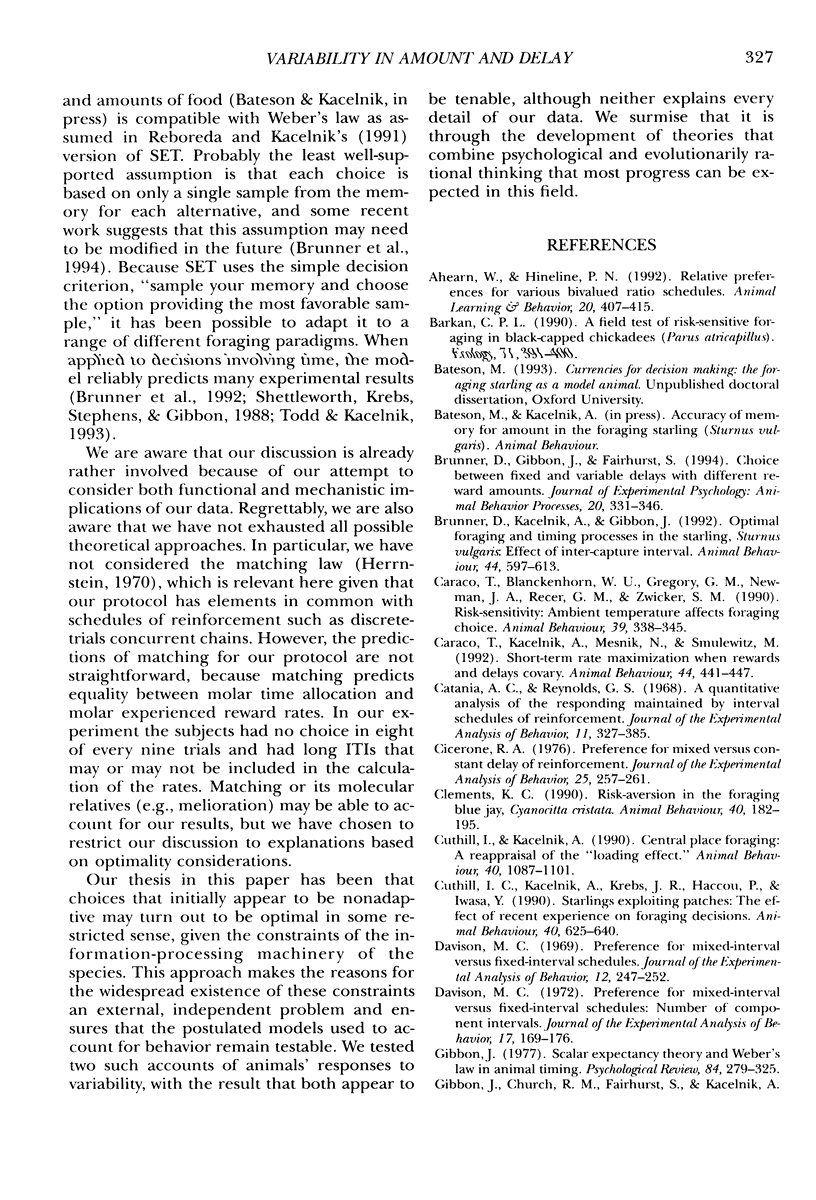
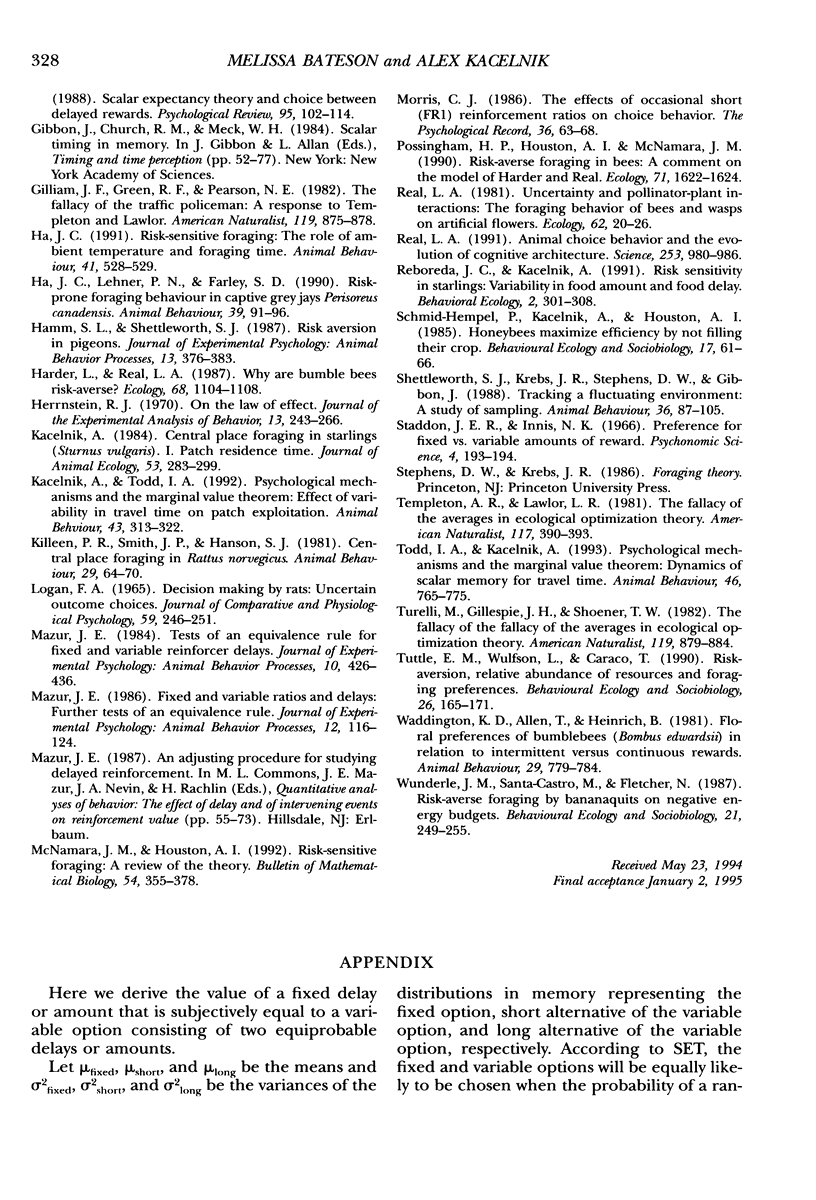
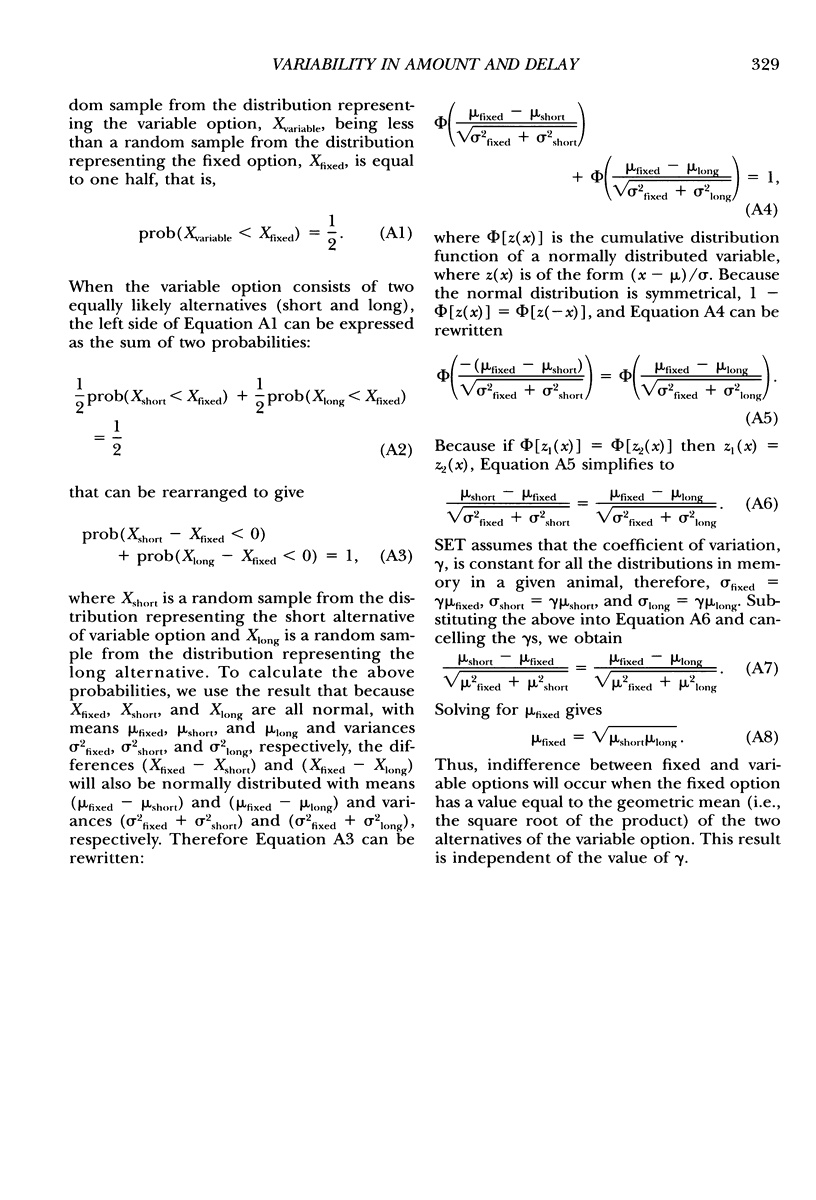
Selected References
These references are in PubMed. This may not be the complete list of references from this article.
- Brunner D., Gibbon J., Fairhurst S. Choice between fixed and variable delays with different reward amounts. J Exp Psychol Anim Behav Process. 1994 Oct;20(4):331–346. [PubMed] [Google Scholar]
- Catania A. C., Reynolds G. S. A quantitative analysis of the responding maintained by interval schedules of reinforcement. J Exp Anal Behav. 1968 May;11(3 Suppl):327–383. doi: 10.1901/jeab.1968.11-s327. [DOI] [PMC free article] [PubMed] [Google Scholar]
- Cicerone R. A. Preference for mixed versus constant delay of reinforcement. J Exp Anal Behav. 1976 Mar;25(2):257–261. doi: 10.1901/jeab.1976.25-257. [DOI] [PMC free article] [PubMed] [Google Scholar]
- Davison M. C. Preference for mixed-interval versus fixed-interval schedules: number of component intervals. J Exp Anal Behav. 1972 Mar;17(2):169–176. doi: 10.1901/jeab.1972.17-169. [DOI] [PMC free article] [PubMed] [Google Scholar]
- Gibbon J., Church R. M., Meck W. H. Scalar timing in memory. Ann N Y Acad Sci. 1984;423:52–77. doi: 10.1111/j.1749-6632.1984.tb23417.x. [DOI] [PubMed] [Google Scholar]
- Herrnstein R. J. On the law of effect. J Exp Anal Behav. 1970 Mar;13(2):243–266. doi: 10.1901/jeab.1970.13-243. [DOI] [PMC free article] [PubMed] [Google Scholar]
- LOGAN F. A. DECISION MAKING BY RATS: UNCERTAIN OUTCOME CHOICES. J Comp Physiol Psychol. 1965 Apr;59:246–251. doi: 10.1037/h0021850. [DOI] [PubMed] [Google Scholar]
- Mazur J. E. Fixed and variable ratios and delays: further tests of an equivalence rule. J Exp Psychol Anim Behav Process. 1986 Apr;12(2):116–124. [PubMed] [Google Scholar]
- Real L. A. Animal choice behavior and the evolution of cognitive architecture. Science. 1991 Aug 30;253(5023):980–986. doi: 10.1126/science.1887231. [DOI] [PubMed] [Google Scholar]


